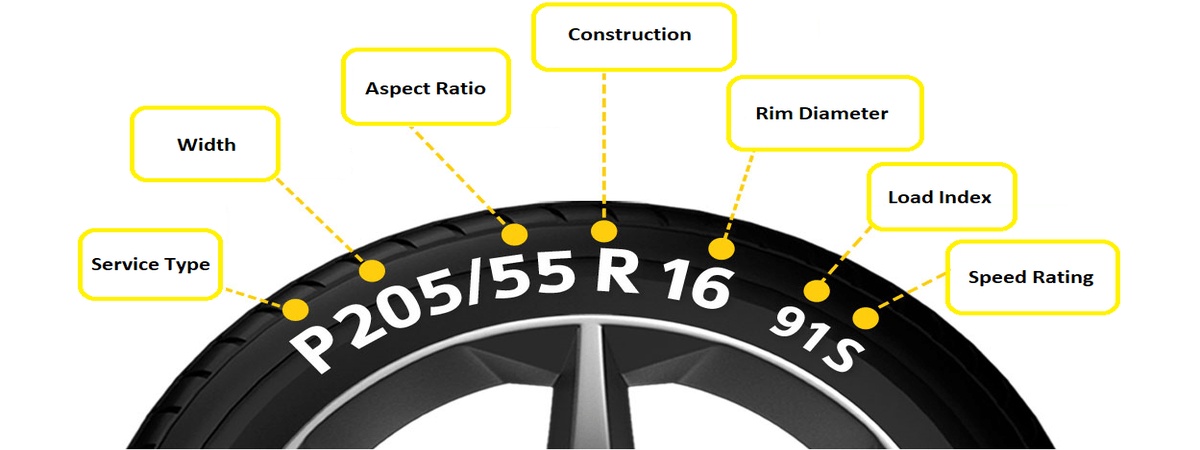
Tyre Width: The tyre width rating is a number given in millimetres and is measured from the maximum width of the tyres midpoint of its sidewall to the same point on the opposite sidewall. Wider tyres can offer better grip but can create excessive amounts of road noise.
Tyre Aspect ratio: Also known as the tyres profile, the tyre aspect ratio relates to the depth of the sidewall. The height of the tyre’s sidewall is expressed as a percentage of the tyres section width. It can be worked out by dividin
g the height of the sidewall by the width and multiplying it by 100. In the example above, the tyre aspect ratio would be 55%. Lower profile tyres can offer better handling. However, this can often be at the cost of slightly harder ride quality. Low profile tyres are often fitted on performance vehicles.Radial Construction: Most tyres are of a radial construction which is marked on tyres by a letter ‘R’. In radial construction tyres, the cord plies are arranged at 90 degrees to the direction of travel which allows the sidewall and the tread to function as two independent features. This makes them stronger and more flexible which makes them better at absorbing shocks, impacts and bumps.
Rim Diameter: The tyre rim diameter is taken from the wheel flange where the tyre is seated to the same point on the opposite side. The tyre rim diameter measurement is given in inches.
Load Index: An index used to determine how much weight each tyre can carry and is displayed as a number. The index starts at 62 for cars weighing 265kg and ends at index 126 for vehicles that weight 1700kg. A tyre with an insufficient load index for the car increases the chances of a blowout.
Speed Rating: Your tyre is given a maximum tyre speed rating for when it is operating at maximum load-carrying capacity. It is represented on the tyre by a letter and measurements range from A1 to Z and cover maximum speeds of 5km/h to 300km/h.
What do tyre sizes mean?
Using the wrong size tyres on your car can invalidate your insurance and cause your car to fail the MOT test. Section 5 of the MOT inspection process relates to tyres, as well as axles and suspension. All vehicles that take the MOT test will have the size of their tyres tested, with class 5 and 7 vehicles also tested on their tyres load and speed ratings. All vehicles also have their Tyre tread and the tyre pressure monitoring system tested.
Speedometers, traction control, torque and gear settings are all engineered in align with the size of the tyres. How far a tyre travels in a full revolution, which depends on the outside diameter of the tyre, affects how each of these separate parts work. Fitting the wrong tyres can alter the full revolution of a tyre, which, among other issues, can cause the speedometer to display incorrect readings.
What tyres do I need? Find the right tyre sizes for your car…
Thankfully, finding the right tyres for your car is straightforward at Stoneacre. All you need to do is enter your vehicle registration or tyre measurements from the markings on the sidewall of your current tyres, and we’ll recommend a set of tyres based on the make and model of your car, or from the tyre measurements and ratings you’ve provided.
No comments:
Post a Comment